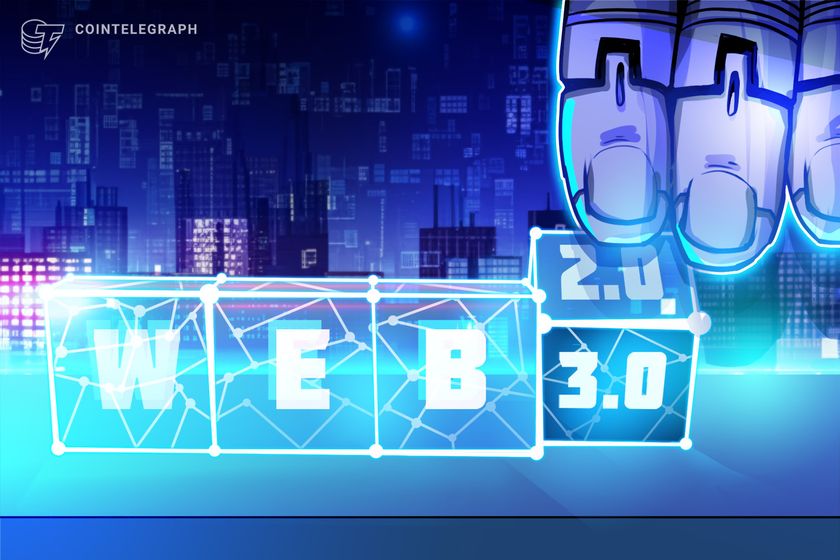The landscape of Web3 is undergoing a significant transformation, as the conversation around blockchain evolves. In a thought-provoking opinion piece authored by Grigore Roșu, founder and CEO of Pi Squared, the central premise raises an intriguing question: Does Web3 really need blockchains to flourish? While blockchain technology, which underpins famed cryptocurrencies like Bitcoin and Ethereum, has long been lauded for its ability to prevent double spending, limits on scalability are becoming increasingly apparent.
Roșu argues that relying on traditional blockchain architecture imposes constraints that hinder the fast-paced needs of developing decentralized applications. The rigid structure of total ordering—where every transaction must wait its turn—may have been a suitable method for initial payment systems but now feels like a bottleneck in an expanding digital landscape. As he illustrates through examples like the FastPay mobile remittance app, innovative alternatives are emerging that prioritize speed and flexibility without sacrificing the core principles of verification and trust.
The discussion extends to the shortcomings of existing blockchain systems, such as Ethereum’s recent upgrades and Solana’s persistent operational challenges. Despite attempts to increase transaction throughput, these systems often struggle with congestion and reliability. As new models, such as modular blockchain frameworks like Celestia, gain traction, the narrative shifts from a one-size-fits-all approach to a more diversified ecosystem that recognizes the need for adaptable and efficient infrastructure.
“What truly underpins decentralized systems is the verifiability of a transaction, not the precise order in which it happened relative to every other global transaction,” Roșu states, challenging the conventional wisdom surrounding blockchain’s integral role.
As Web3 continues to evolve, it is becoming clear that blockchain’s role might not be as a master ledger, but rather as a decentralized verifiable tool within a more dynamic framework. The challenges faced by the incumbents of blockchain technology underline a pivotal moment in the industry, with a push towards embracing new, scalable alternatives. This could pave the way for a future that enhances user experiences while leveraging the unique capabilities of decentralized systems.
The Future of Blockchain in Web3
This article discusses the evolving role of blockchain technology in the context of Web3, emphasizing the need for new approaches to payment systems and transaction verifiability. Here are the key points:
- Blockchain’s Limitations:
- While blockchain solved the double-spending problem, it imposed architectural constraints due to its global consensus mechanism.
- This rigidity limits speed and flexibility, which are crucial for complex applications in Web3.
- Alternative Solutions:
- FastPay demonstrated that double-spending can be avoided without total ordering, leading to more scalable systems like Linera.
- These systems utilize independent local orderings while ensuring global verifiability.
- Reevaluation of Trustless Systems:
- Decentralization is rooted in verifiability, not the order of transactions.
- Concerns about losing financial integrity without blockchains may overlook broader implementation of trustlessness.
- Need for Evolving Protocols:
- Future protocols must prioritize flexibility and verifiable transactions to improve throughput and user experience.
- Sticking to rigid blockchain architectures could become a competitive disadvantage for investors and developers.
- The Shift in Blockchain Roles:
- Blockchains may evolve into universal verifiers or decentralized notaries, rather than as master ledgers.
- Legacy models risk obsolescence as Web3 continues to develop beyond rigid block-based systems.
The transition to more adaptable infrastructure will require understanding and capitalizing on the shift away from rigid blockchain systems.
This discussion is crucial for individuals and organizations involved in blockchain technology, as it highlights the importance of adapting to new methodologies for better performance and innovation in their respective fields.
Revolutionizing Web3: The Shift Beyond Blockchain
The ongoing discourse around the necessity of blockchain in the evolving landscape of Web3 has ignited passionate debates among tech enthusiasts and professionals alike. While Grigore Roșu, founder and CEO of Pi Squared, proposes a shift toward non-blockchain solutions for fast payment systems and verified transactions, it’s essential to survey the broader ecosystem and similar advancements that are emerging simultaneously.
Comparative Advantage: One of the key advantages highlighted in Roșu’s perspective is the agility offered by payment protocols like FastPay, which provides alternatives to blockchain’s serialized processing. FastPay showcases how transaction verifiability can be achieved without adhering to the rigid constraints of total ordering, thereby enabling higher throughput and user satisfaction. This adaptability positions FastPay and its offspring technologies—such as Linera and Sui—as frontrunners in an increasingly competitive arena where speed is paramount for modern applications.
Competitive Disadvantages: However, the conversation isn’t purely about advantages. Critics of moving away from blockchain contend that this shift risks diluting transparency and trust that decentralization promises, particularly in financial contexts. Established players, heavily invested in blockchain technology, could face potential backlash as legacy systems are challenged by these new entrants prioritizing efficiency over adherence to traditional models. The existing foundational trust in blockchain—rooted in its immutability and total ordering—may not easily translate to these newer models, creating skepticism among users accustomed to the security that blockchain has historically provided.
Benefactors and Constraints: Startups and developers experimenting with innovative protocols and frameworks could significantly benefit from this divergence, as it enhances their ability to create scalable, user-friendly applications. Additionally, organizations that are agile enough to pivot and adapt to these advances will likely thrive, avoiding the pitfalls of stagnation that can beset businesses devoted solely to blockchain. Conversely, established blockchain-centric firms might find themselves at a crossroads. If they resist adaptation, they could fall victim to obsolescence as market demand shifts towards more flexible solutions. Venture funds and investors deeply embedded in the legacy blockchain narrative may also face existential dilemmas as these newer models challenge the status quo, putting both financial and reputational stakes at risk.
The landscape of decentralized technology is entering a crucial and transformative phase. Companies and developers that can harness this inflection point, embracing a broader range of solutions while efficiently accommodating users’ demands for speed and flexibility, may find themselves leading the charge into the next technological era.

















